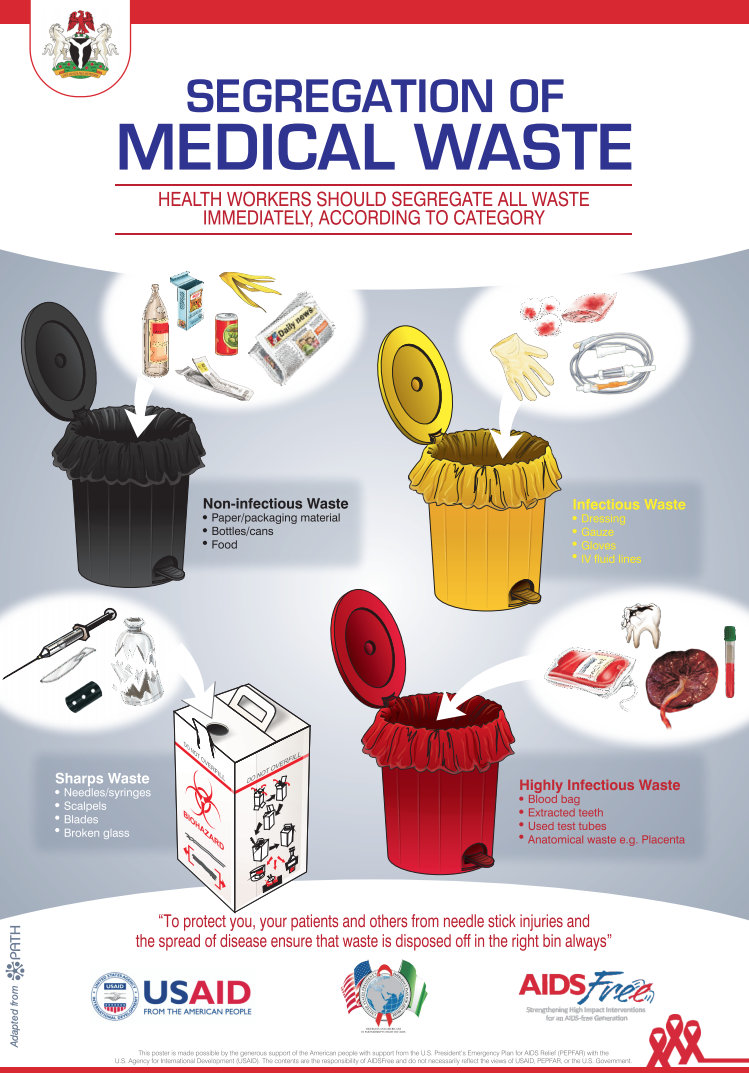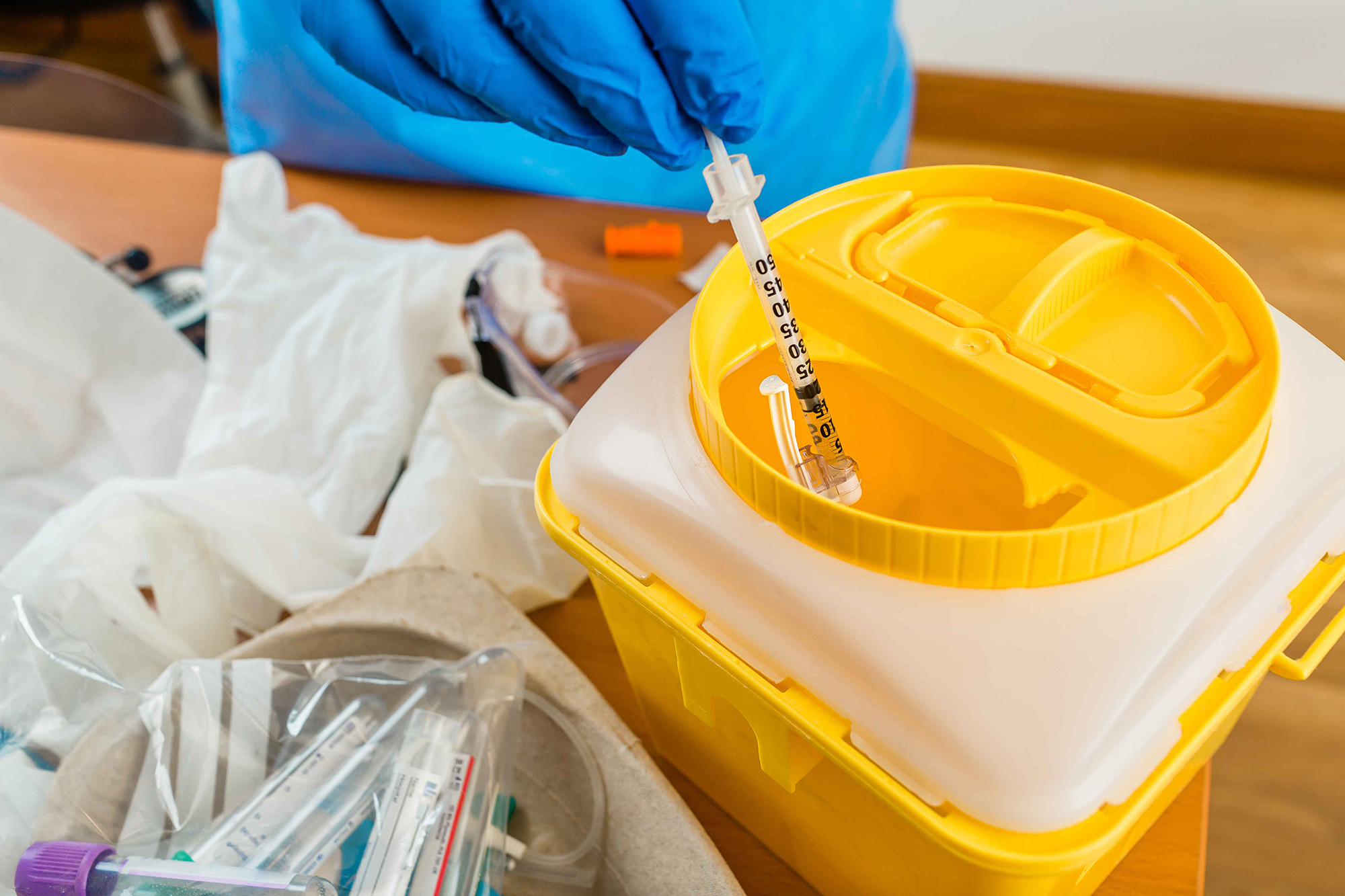Strategic Medical Waste Disposal Solutions: Supporting Safety And Security and Sustainability
Lasting Solutions for Medical Garbage Disposal
The correct monitoring and disposal of clinical waste is crucial in keeping a risk-free and lasting medical care system. This intro will certainly check out different lasting services for medical waste disposal, including waste partition and sorting, on-site waste therapy systems, reusing and reuse programs, waste-to-energy conversion innovations, as well as collaboration and education initiatives.
Waste Partition and Sorting
The process of waste segregation and sorting is crucial in ensuring appropriate monitoring and disposal of clinical waste. Medical waste is classified into various groups based on its possible risk to human wellness and the atmosphere. Appropriate partition and sorting of waste help to minimize the threat of contamination and make certain that each kind of waste is handled and disposed of properly.
The primary step in waste partition and sorting is to determine and separate different kinds of clinical waste at the point of generation. This entails identifying the numerous groups of waste, such as contagious waste, sharps waste, pharmaceutical waste, and chemical waste. medical waste disposal service. Each group calls for specific dealing with and disposal methods to stop injury to health care workers, clients, and the atmosphere

On-site Waste Treatment Systems
Continuing from the previous subtopic on waste partition and sorting, an effective service for lasting clinical garbage disposal is the application of on-site waste treatment systems - medical waste disposal. These systems allow health care facilities to treat their clinical waste on-site, reducing the demand for transport and disposal at off-site facilities. On-site waste treatment systems generally consist of innovations such as autoclaves, microwave systems, or chemical sanitation units
Autoclaves, typically used in healthcare setups, use high-pressure heavy steam to sanitize and deal with medical waste. This procedure properly kills germs, viruses, and various other potentially harmful microbes, rendering the waste safe for additional handling and disposal. Microwave systems, on the various other hand, usage microwave radiation to heat and treat the waste, attaining similar results to autoclaves.
Chemical sanitation units include making use of chemicals to disinfect and treat clinical waste. These devices can make use of numerous disinfectants, such as chlorine-based services, to counteract pathogens and lower the risk of contamination. The treated waste can after that be securely gotten rid of in regular waste streams or undertake more treatment, such as shredding or incineration.
Applying on-site waste treatment systems uses a number of benefits. It lowers the ecological effect connected with transferring clinical waste to off-site centers, decreasing carbon emissions and the risk of crashes throughout transport. Furthermore, it provides medical care facilities with more control over the treatment process, making sure compliance with guidelines and lowering the possibility for unauthorized accessibility to delicate clinical waste.
Recycling and Reuse Programs
To better boost lasting medical waste disposal methods, health care centers can carry out recycling and reuse programs, developing upon the structure of on-site waste therapy systems. Recycling and reuse programs supply an additional layer of ecological obligation by diverting medical waste from garbage dump and searching for alternative usages for sure materials.
One key element of reusing and reuse programs is the segregation of waste at the resource. medical waste removal service. By applying correct waste segregation procedures, health care facilities can divide recyclable materials, such as plastics, steels, and glass, from non-recyclable waste. This permits the efficient recycling of these products, lowering the demand for virgin resources and reducing the environmental effect of medical garbage disposal
Along with reusing, healthcare centers can explore opportunities for recycling certain clinical things. For instance, single-use items like medical drapes and gowns can be sterilized and reused, decreasing the requirement for brand-new products and reducing waste generation. Reusable sharps containers can additionally be employed, lowering the quantity of plastic waste generated from disposable containers.
Carrying out recycling and reuse programs calls for appropriate framework and training - WasteX Medical Waste Disposal. Health care centers should spend in appropriate reusing bins, segregation systems, and sterilization equipment, in addition to guarantee team are informed on correct waste administration techniques
Waste-to-Energy Conversion Technologies
One possible method to resolve medical garbage disposal sustainably is with the application of waste-to-energy conversion innovations. These modern technologies use a promising remedy to the growing issue of clinical waste, which poses considerable ecological and public health threats. Waste-to-energy conversion involves converting the natural parts of medical waste into power, such as warm hop over to these guys or electricity, via numerous processes like pyrolysis, gasification, and incineration.
Incineration is the most typically utilized waste-to-energy innovation for clinical waste disposal - WasteX Medical Waste Disposal. It involves the controlled combustion of waste at heats, transforming it into ash, gases, and heat. This warm can be utilized to produce heavy steam, which can then be exchanged electricity
Pyrolysis and gasification are newer technologies that supply even more eco-friendly choices to incineration. Pyrolysis involves heating up the waste in the absence of oxygen, resulting in the manufacturing of gases and char. Gasification, on the various other hand, transforms waste into a synthetic gas or "syngas" that can be used as a gas for electrical energy generation or various other industrial processes.
These waste-to-energy conversion technologies not just lower the quantity of medical waste but likewise give a source of renewable resource. Furthermore, they can help in reducing greenhouse gas discharges and reliance on fossil fuels (WasteX Medical Waste Disposal). It is essential to ensure that these modern technologies are executed with correct emissions regulate steps to minimize any type of potential unfavorable influences on air high quality and public wellness.
Partnership and Education And Learning Campaigns
Cooperation amongst stakeholders in the healthcare market is crucial for carrying out lasting services for clinical garbage disposal. In order to effectively attend to the obstacles related to clinical waste management, it is vital for medical care facilities, waste administration firms, regulators, and other pertinent events to interact.

Moreover, education efforts play an important role in promoting lasting techniques. Medical care experts need to be knowledgeable about the environmental impact of inappropriate waste monitoring and the relevance of carrying out lasting services. Training programs and instructional products can assist them understand the correct partition of waste, using environment-friendly choices, and the advantages of waste-to-energy conversion modern technologies.
Partnership and education can also help with the development of regulations and standards for medical garbage disposal. By interacting, stakeholders can add to the development of extensive policies that ensure secure handling, transportation, and therapy of medical waste.
Verdict
In final thought, embracing lasting services for clinical waste disposal is essential in order to decrease the unfavorable influence on the atmosphere and public health. Waste partition and sorting, on-site waste therapy systems, reusing and reuse programs, waste-to-energy conversion innovations, and collaboration and education campaigns are all essential approaches to accomplish this objective. Executing these options calls for partnership in between healthcare facilities, waste monitoring companies, and government firms, as well as constant education and learning and awareness campaigns.
The procedure of waste partition and sorting is vital in guaranteeing appropriate administration and disposal of clinical waste.The very first action in waste segregation and sorting is to determine and divide various kinds of medical waste at the point of generation. This includes identifying the numerous categories of waste, such as contagious waste, sharps waste, pharmaceutical waste, and chemical waste.Continuing from the previous subtopic on waste partition and sorting, a reliable remedy for sustainable medical waste disposal is the application of on-site waste therapy systems. The cured waste can after that be securely disposed of in normal waste streams or undertake further treatment, such as shredding or incineration.